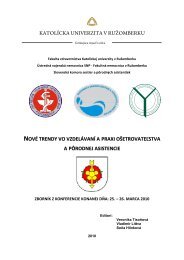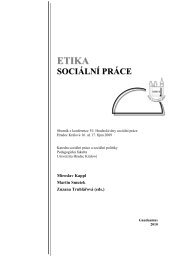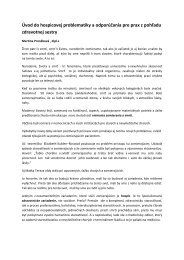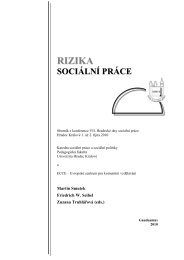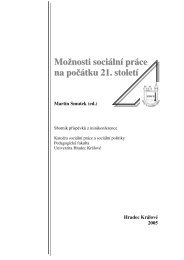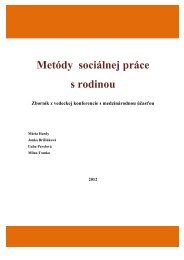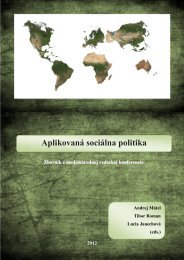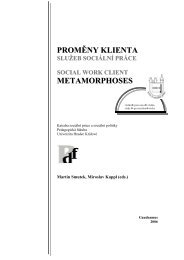Zmena klÃmy â možný dopad (nielen) na obyvateľstvo - Prohuman
Zmena klÃmy â možný dopad (nielen) na obyvateľstvo - Prohuman
Zmena klÃmy â možný dopad (nielen) na obyvateľstvo - Prohuman
Create successful ePaper yourself
Turn your PDF publications into a flip-book with our unique Google optimized e-Paper software.
Abstract<br />
Many regions of the world have experienced an increased incidence of extreme<br />
weather in recent years. This year, the most serious drought since 1939 hit the United<br />
States of America, while in 2011 the state Texas was affected by record wildfires<br />
in consequence of exceptio<strong>na</strong>l drought. The summer of 2012 has proven to be the<br />
most severe wildfire season Russia has faced in a decade. Unlike 2010, when severe<br />
fires raged in western Russia because of extreme temperature and prolong<br />
heat waves, most of the fires in 2012 have burned through taiga in remote parts<br />
of eastern and central Siberia. More than 17,000 wildfires had burned more than<br />
30 million hectares (74 million acres) through August 2012. However, it is not only<br />
a temperature what seems to be more extreme, but also the water cycles related<br />
phenome<strong>na</strong>. Devastating torrential rainfall has become more frequent, and<br />
moreover in terms of total amount of water, they have also reached more extreme<br />
values. Disturbed and unbalanced temporal and spatial distribution of rainfall<br />
caused a high number of disastrous floods in recent years. In 2010 disastrous floods<br />
affected more than 20 million people in Pakistan and at the turn of 2010/11 the<br />
widespread floods occurred in state of Queensland, in Australia, where the region<br />
of total area of France and Germany combined was stricken. The British Islands<br />
experienced the wettest summer since 1912 this year, while the worst flash-floods in<br />
60 years hit the capital city of Chi<strong>na</strong>, Beijing. Demonstrably higher number of extreme<br />
weather incidences seen across the world in the period of the last decade has<br />
become a breeding ground for discussions between experts and lay people about<br />
whether this phenomenon could be actually linked to global warming. The article<br />
will show us that in case of certain types of extremes, constantly increasing number<br />
of scientific studies have brought us the evidence of existing causal relationship<br />
between the frequency as well as intensity extremes and progressive changes in<br />
the basic physical parameters of the Earth´s atmosphere. The following review of<br />
the scientific literature published in recent years attempts to summarize current<br />
knowledge on the links between climate change (changes caused by human activities,<br />
especially greenhouse gas emissions), and extreme weather.<br />
Key words: extreme weather, climate anomalies, statistics of extremes, heat waves,<br />
extreme precipitation, drought<br />
112





